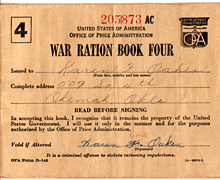Another in an ongoing series of posts celebrating the life of our mother:
It’s easy, sometimes, to think of our parents as somehow older than they are. We too often were guilty of thinking of Karen as being of the Greatest Generation, of imagining her listening and dancing to the big bands during the height of the Swing Era.
But she was born in 1933. She was just a child when Benny Goodman, Artie Shaw, Tommy and Jimmy Dorsey, and the rest were flying high. Heck, she was just 11 when Glenn Miller died.
She remembered and enjoyed that music, sure, much as we remember and enjoy the pop music of the 1960s, when we were kids. But it wasn’t the music of her adolescence and young adulthood. She grew into young womanhood during the post-big band era, when the focus moved to vocalists. Big bands were still around, sure, but they weren’t the dominant force they had been.
Hers was the era of pre-rock ‘n’ roll vocalists like Frank Sinatra, Perry Como, Nat “King” Cole, Patti Page, and Margaret Whiting.
For that matter, Karen wasn’t so old when rock ‘n’ roll began to capture the nation’s attention. She was 21 when Bill Haley and the Comets recorded “Rock Around the Clock” in 1954 and 23 when Elvis Presley‘s recording of “Heartbreak Hotel” became a No. 1 hit in 1956. She wasn’t likely to be found among the squealing teens at a Presley performance, but she wasn’t necessarily old enough to view the young rock-n-roller with the alarmed disapproval so many of her elders did. Presley was, after all, less than two years younger than Karen.
 Similarly, we’re often a bit surprised to be reminded that Karen was just a kid during World War II and the events that preceded the United States’ involvement in it. This was brought home to me by the documents that make up this week’s installment of The Karen Files, which we found while sorting through the thousands of snapshots and documents Karen left behind.
Similarly, we’re often a bit surprised to be reminded that Karen was just a kid during World War II and the events that preceded the United States’ involvement in it. This was brought home to me by the documents that make up this week’s installment of The Karen Files, which we found while sorting through the thousands of snapshots and documents Karen left behind.
The documents accompanying this text are pages from ration books. Until coming across these, we had no idea that children received ration booklets, too. It makes sense, though; obviously, a family of ten would have greater needs than a family of three, so assigning each child their own ration books (to be used, no doubt, by their parents) seems the ideal way to assure that each family gets what’s coming to it.
 We’ve scanned and posted all the pages of the ration books for your consideration here. Perhaps many of you have seen ration books before—after all, every American had one, and of those millions of books, surely not a few got stashed when they were no longer needed, for later generations to come across, as we did, in dusty cartons long stowed away in attics or basements.
We’ve scanned and posted all the pages of the ration books for your consideration here. Perhaps many of you have seen ration books before—after all, every American had one, and of those millions of books, surely not a few got stashed when they were no longer needed, for later generations to come across, as we did, in dusty cartons long stowed away in attics or basements.
We learned a few not terribly weighty details about Karen’s life in May, 1942, from these documents. She lived at 509 South 4th Street in Okemah, Oklahoma (we knew she had grown up in a different house than the one where we visited our grandparents, but we didn’t know where it was). She was nine years old, stood four feet and one-half inches tall, and weighed 68 pounds. Her eyes were blue then, as always, and her hair was listed as blonde (light brown, we’d have to call it). Again, these details have no real import, but small things can have an impact when you’re trying to imagine loved ones at particular points in their lives.
We wish we’d thought to ask Karen what the heck she thought of Elvis Presley when he hit the national stage or how it felt to be a child during World War II. There are so many questions that we don’t think to ask our folks, even when we spend a lot of time thinking about the old days. Then a loved one’s mind grows feeble, due to illness or advanced age, or a life comes unexpectedly to an end, and it’s too late to ask.
